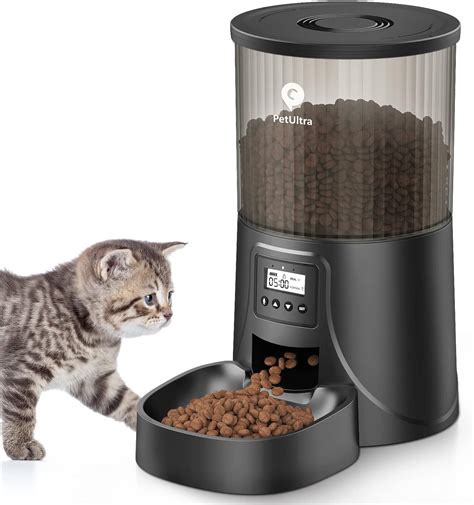An Essential Tool for Kitten Care
Automatic cat feeders are now widely available, yet doubts linger about their suitability for kittens. This article will examine the pros and cons of automatic cat feeders for kittens, providing insight for pet owners considering this option.

Why an Automatic Cat Feeder Matters for Kittens
Benefits
- Consistent Feeding: Kittens require frequent, small meals to maintain their energy levels. Automatic feeders can dispense food on a regular schedule, ensuring consistent nourishment.
- Portion Control: They help prevent overfeeding, which can lead to weight gain and health problems.
- Convenience: Owners can schedule feedings in advance, providing peace of mind when away from home.
- Hygiene: Automatic feeders reduce the risk of food spills and contamination.
Considerations
- Size and Weight: Kittens are small, so the feeder must be appropriately sized.
- Food Type: Choose a feeder compatible with kitten food, accounting for their smaller kibble size.
- Safety: Ensure the feeder is stable and has no protruding parts that could injure the kitten.
How to Choose the Right Automatic Cat Feeder for Kittens
When selecting an automatic cat feeder for kittens, consider the following:
- Capacity: Determine the amount of food required for the kitten’s daily meals.
- Settings: Look for feeders with adjustable portion sizes and feeding schedules.
- Power Source: Choose a feeder with reliable power, either battery-operated or with a power adapter.
- Construction: Opt for feeders made of durable, easy-to-clean materials.
Automatic Cat Feeder for Kittens VS Traditional Methods
| Feature | Automatic Feeder | Traditional Methods |
|---|---|---|
| Convenience | Remote scheduling, consistent feeding | Manual feeding, less flexible |
| Portion Control | Consistent portion sizes | Overfeeding risk |
| Hygiene | Reduced food spills and contamination | Potential for food spoilage |
| Safety | Stable and secure | Reliance on owner’s memory and availability |
Tips and Tricks
- Start Slowly: Gradually introduce the automatic feeder to kittens, allowing them to adjust to the new routine.
- Monitor Kitten’s Eating Habits: Observe the kitten’s behavior and adjust feeding schedules or portion sizes as needed.
- Regular Cleaning: Clean the feeder and food bowl regularly to maintain hygiene.
- Consider a Wet Food Feeder: Some automatic feeders dispense wet food, providing a nutritious option for kittens.
Future Trends and Innovations
The automatic cat feeder market is expected to expand significantly in the coming years, driven by innovation and advancing technology. Future developments may include:
- Smart Feeders: Integration with smartphones and other devices for remote monitoring and control.
- Biometric Identification: Feeders that recognize individual kittens, customizing feeding schedules and portions.
- Health Monitoring: Integration with sensors to detect changes in a kitten’s eating habits, alerting owners to potential health issues.
Conclusion
Automatic cat feeders can provide numerous benefits for kittens, offering convenience, portion control, and consistent feeding. By considering the factors outlined in this article, pet owners can make an informed decision on whether an automatic cat feeder is right for their kitten. As the market continues to evolve, expect further innovations that enhance the care and well-being of kittens.





















